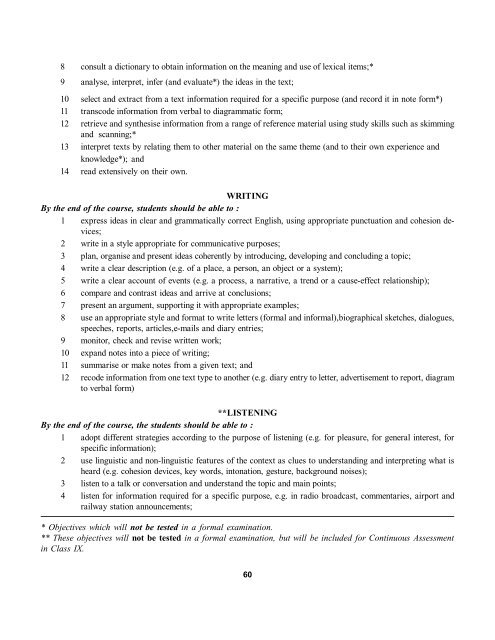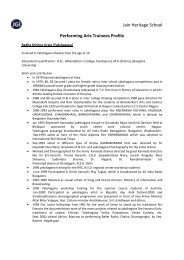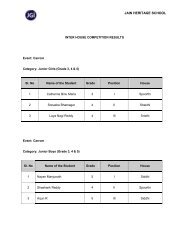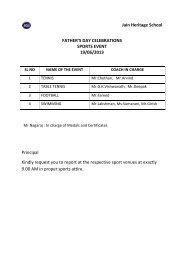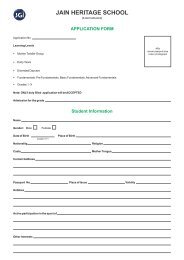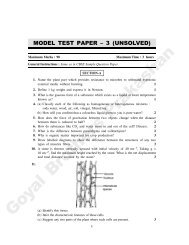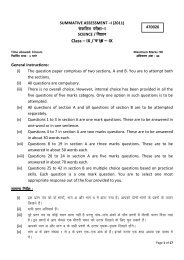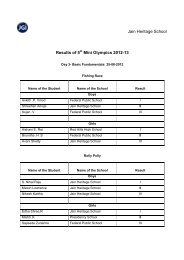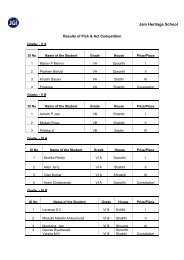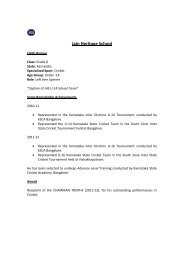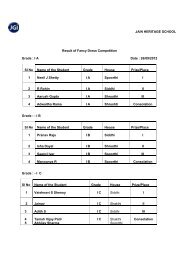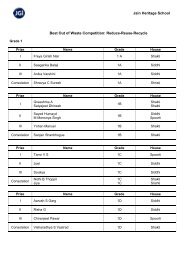Secondary School Curriculum 2012 - Central Board of Secondary ...
Secondary School Curriculum 2012 - Central Board of Secondary ...
Secondary School Curriculum 2012 - Central Board of Secondary ...
Create successful ePaper yourself
Turn your PDF publications into a flip-book with our unique Google optimized e-Paper software.
8 consult a dictionary to obtain information on the meaning and use <strong>of</strong> lexical items;*<br />
9 analyse, interpret, infer (and evaluate*) the ideas in the text;<br />
10 select and extract from a text information required for a specific purpose (and record it in note form*)<br />
11 transcode information from verbal to diagrammatic form;<br />
12 retrieve and synthesise information from a range <strong>of</strong> reference material using study skills such as skimming<br />
and scanning;*<br />
13 interpret texts by relating them to other material on the same theme (and to their own experience and<br />
knowledge*); and<br />
14 read extensively on their own.<br />
WRITING<br />
By the end <strong>of</strong> the course, students should be able to :<br />
1 express ideas in clear and grammatically correct English, using appropriate punctuation and cohesion devices;<br />
2 write in a style appropriate for communicative purposes;<br />
3 plan, organise and present ideas coherently by introducing, developing and concluding a topic;<br />
4 write a clear description (e.g. <strong>of</strong> a place, a person, an object or a system);<br />
5 write a clear account <strong>of</strong> events (e.g. a process, a narrative, a trend or a cause-effect relationship);<br />
6 compare and contrast ideas and arrive at conclusions;<br />
7 present an argument, supporting it with appropriate examples;<br />
8 use an appropriate style and format to write letters (formal and informal),biographical sketches, dialogues,<br />
speeches, reports, articles,e-mails and diary entries;<br />
9 monitor, check and revise written work;<br />
10 expand notes into a piece <strong>of</strong> writing;<br />
11 summarise or make notes from a given text; and<br />
12 recode information from one text type to another (e.g. diary entry to letter, advertisement to report, diagram<br />
to verbal form)<br />
**LISTENING<br />
By the end <strong>of</strong> the course, the students should be able to :<br />
1 adopt different strategies according to the purpose <strong>of</strong> listening (e.g. for pleasure, for general interest, for<br />
specific information);<br />
2 use linguistic and non-linguistic features <strong>of</strong> the context as clues to understanding and interpreting what is<br />
heard (e.g. cohesion devices, key words, intonation, gesture, background noises);<br />
3 listen to a talk or conversation and understand the topic and main points;<br />
4 listen for information required for a specific purpose, e.g. in radio broadcast, commentaries, airport and<br />
railway station announcements;<br />
* Objectives which will not be tested in a formal examination.<br />
** These objectives will not be tested in a formal examination, but will be included for Continuous Assessment<br />
in Class IX.<br />
60


